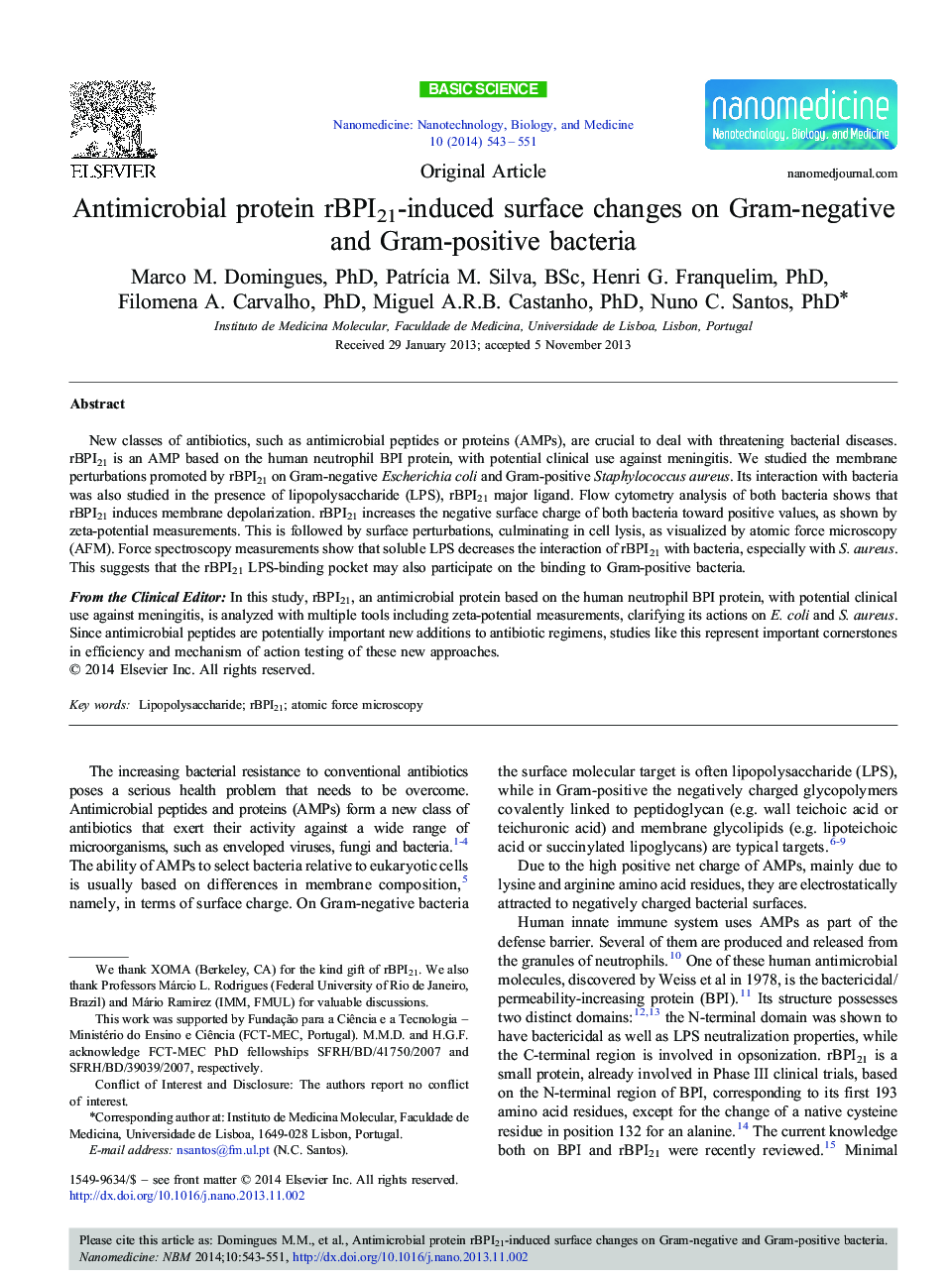| کد مقاله | کد نشریه | سال انتشار | مقاله انگلیسی | نسخه تمام متن |
|---|---|---|---|---|
| 877655 | 911039 | 2014 | 9 صفحه PDF | دانلود رایگان |

New classes of antibiotics, such as antimicrobial peptides or proteins (AMPs), are crucial to deal with threatening bacterial diseases. rBPI21 is an AMP based on the human neutrophil BPI protein, with potential clinical use against meningitis. We studied the membrane perturbations promoted by rBPI21 on Gram-negative Escherichia coli and Gram-positive Staphylococcus aureus. Its interaction with bacteria was also studied in the presence of lipopolysaccharide (LPS), rBPI21 major ligand. Flow cytometry analysis of both bacteria shows that rBPI21 induces membrane depolarization. rBPI21 increases the negative surface charge of both bacteria toward positive values, as shown by zeta-potential measurements. This is followed by surface perturbations, culminating in cell lysis, as visualized by atomic force microscopy (AFM). Force spectroscopy measurements show that soluble LPS decreases the interaction of rBPI21 with bacteria, especially with S. aureus. This suggests that the rBPI21 LPS-binding pocket may also participate on the binding to Gram-positive bacteria.From the Clinical EditorIn this study, rBPI21, an antimicrobial protein based on the human neutrophil BPI protein, with potential clinical use against meningitis, is analyzed with multiple tools including zeta-potential measurements, clarifying its actions on E. coli and S. aureus. Since antimicrobial peptides are potentially important new additions to antibiotic regimens, studies like this represent important cornerstones in efficiency and mechanism of action testing of these new approaches.
Graphical AbstractLeft: Atomic force microscopy-based force spectroscopy nanoprobing of the interaction between the antimicrobial protein rBPI21 and bacteria surface. Right: E. coli lysis after incubation with rBPI21.Figure optionsDownload high-quality image (84 K)Download as PowerPoint slide
Journal: Nanomedicine: Nanotechnology, Biology and Medicine - Volume 10, Issue 3, April 2014, Pages 543–551